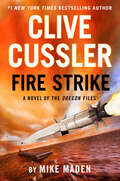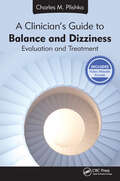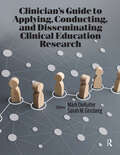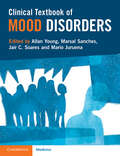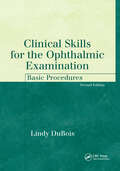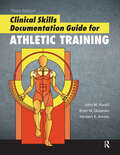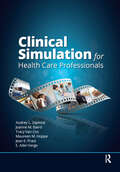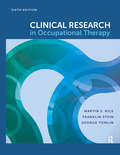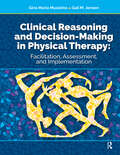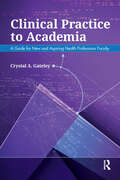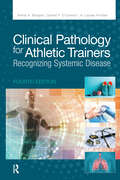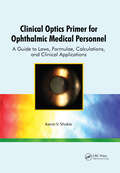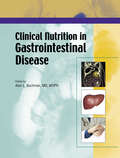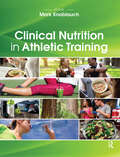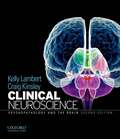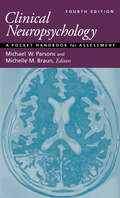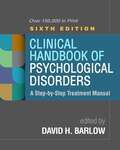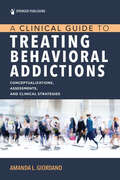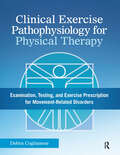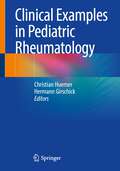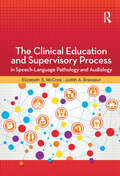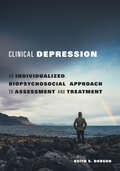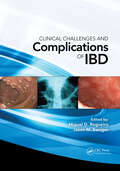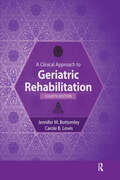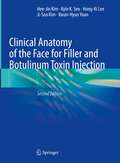- Table View
- List View
Clive Cussler Fire Strike (The Oregon Files #17)
by Mike MadenJuan Cabrillo and the crew of the Oregon must battle an army of genetically engineered mercenaries to stop a hypersonic missile attack in this explosive new adventure in the #1 New York Times bestselling series. When Cabrillo is hired to extract an undercover operative in Kenya, he finds himself on the trail of a deadly international plot. A Saudi prince seeks to unleash a deadly assault on U.S. forces, sparking a new war in the Middle East and ultimately destroying Israel. Cabrillo&’s crew have met their most fearsome adversaries yet: a force of bio-hacked soldiers endowed with extreme strength and stamina and an unquenchable appetite for violence. The Oregon team must journey from the Amazon rainforest to an abandoned monastery in Eritrea before a final showdown in the mountains of Yemen, using every shred of courage and cunning they can muster to disable the ship-killer missile before the Arabian Sea becomes a mass grave.
A Clinician's Guide to Balance and Dizziness: Evaluation and Treatment
by Charles M. PlishkaWith an increasing number of referrals to treat balance impairment, gait disorders, and dizziness, A Clinician’s Guide to Balance and Dizziness: Evaluation and Treatment by Dr. Charles M. Plishka looks to address these issues and provides tests, measures, and interventions that are matched to research studies when available, for evidence-based practice. It begins with a review of the anatomy and physiology of the systems used to balance. With a basic understanding of how we balance, the signs and symptoms of patients will be understood with much greater ease.A Clinician’s Guide to Balance and Dizziness enables the reader to perform a complete and thorough evaluation and helps to provide treatment options for identified deficits that place the patient at risk for falls. Along with numerous diagrams and photos, this text comes with access to a web site containing video clips that demonstrate key evaluation and treatment techniques. The result will be a better evaluation, treatment plan, and outcome.Topics and Features Include: How do we balance? Tests to evaluate the balance-impaired patient Tests and interventions for conditions such as Benign Paroxysmal Positional Vertigo (BPPV), Vestibular Loss, and the central and peripheral causes of dizziness Therapy treatments “How to” instructions throughout Companion web site with video clips demonstrating evaluation and treatments A Clinician’s Guide to Balance and Dizziness: Evaluation and Treatment is an easy-to-use reference perfect for professionals who assess and treat balance impairments and dizziness. While it is an instructional text for physical therapy students and clinicians, it is also a great reference for established physicians, vestibular and balance therapy specialists, occupational therapists, nurse practitioners, physician assistants, audiologists, and athletic trainers.
Clinician’s Guide to Applying, Conducting, and Disseminating Clinical Education Research
by Mark DeRuiter Sarah GinsbergClinician's Guide to Applying, Conducting, and Disseminating Clinical Education Research provides clinical educators with the fundamental knowledge to be effective consumers of research and integrate it into their clinical education practice.Clinical educators are routinely called upon to provide early-career clinicians with clinical education and supervision within their practice. Clinician’s Guide to Applying, Conducting, and Disseminating Clinical Education Research fits at the intersection of clinical education and research for the supervising clinician—helping clinicians consider how they might contribute to the scholarship of teaching and learning related to clinical education.This one-of-a-kind text features a multidisciplinary perspective with contributors from various fields in allied health, such as speech-language pathology, occupational therapy, audiology, physical therapy, and more.What’s included in Clinician’s Guide to Applying, Conducting, and Disseminating Clinical Education Research: A hands-on workbook section for clinical educators to apply the content to education and clinical supervision research Chapters on seeking research mentorship, qualitative and quantitative research foundational concepts, and publishing and presenting research Parallels between evidence-based practice and evidence-based education Clinician’s Guide to Applying, Conducting, and Disseminating Clinical Education Research walks the reader through generating research all the way to implementation and dissemination while linking communities of working professionals to their students and research institutions.
Clinical Textbook of Mood Disorders
by Jair C. Soares Allan Young Marsal Sanches Mario JuruenaMood disorders affect around 1 in 5 people, but the diagnosis and management of these conditions can be challenging. This practical handbook presents a comprehensive overview of these disorders, as well as detailed guidelines for their treatment. The handbook takes a transdisciplinary approach to mood disorders, focusing not only on the biological aspects but also on psychosocial features of importance for optimal diagnosis and management. Content covers nosological considerations, historical aspects, peculiarities along the lifespan, and the associations between mood disorders and other conditions, with a focus on their implications for the optimal management of patients. Practical and evidence-based information is discussed on the role of guidelines related to treatment in selected population groups, including youth, the elderly, and women. With a practical, reader-friendly approach, this book will be invaluable for mental health professionals involved in the treatment of patients with mood disorders, including trainees from different mental health areas.
Clinical Skills for the Ophthalmic Examination: Basic Procedures (The Basic Bookshelf for Eyecare Professionals)
by Lindy DuboisThe step-by-step, instructional guide for the most common ophthalmic instruments and procedures has been updated to a second edition. Clinical Skills for the Ophthalmic Examination: Basic Procedures, Second Edition provides details on tests frequently performed in the office and provides instructions on the proper way to perform them. Lindy DuBois focuses on presenting fundamental instruction in a clear and easy-to-use manual. Essential chapters, such as those on patient history, medications, allergies, and refractive surgery have been updated to offer critical information for the ophthalmic professional. New to this edition: An expanded History section with a detailed patient interview to comply with new regulations. Expanded Interim History section to include patients with low vision. New sections on Exophthalmometry and A-Scan Biometry. Make Clinical Skills for the Ophthalmic Examination: Basic Procedures, Second Edition your go-to text for information on the latest procedures and instruments used in the clinic today.
Clinical Skills Documentation Guide for Athletic Training
by John Hauth Brian Gloyeske Herb AmatoFor more than 15 years, Clinical Skills Documentation Guide for Athletic Training has been an invaluable resource for athletic training students to learn, practice, and master clinical skill sets throughout their educational career. A textbook that can be used from the start of their education up until graduation becomes essential to this learning process.Clinical Skills Documentation Guide for Athletic Training, Third Edition includes a more user-friendly layout for the student. Organized by the Athletic Training Education Competencies, Fifth Edition and the associated content areas, this Third Edition allows for easier integration into the classroom, laboratory activities, and clinical assessment.The organization of skills around Athletic Training Education Competencies, Fifth Edition, including crosswalk information from the latest BOC Role Delineation Study/Practice Analysis, Sixth Edition, aligns the skill sheets from Clinical Skills Documentation Guide for Athletic Training, Third Edition with commonly used texts and reference materials.What is in the Third Edition: A user-friendly layout organized by the Athletic Training Education Competencies, Fifth Edition and mapped by the BOC domains New clinical skill assessment forms in the areas of acute care, prevention and health promotion, and therapeutic interventions Includes references to specificity, sensitivity, and evidence-based practice guidelines where appropriate The Program Assessment chapter provides faculty with an excellent resource for tracking mastery of skills and program outcome achievement Instructor’s materials consist of online versions of the clinical integration proficiencies Included with the text are online supplemental materials for faculty use in the classroom.With an updated user-friendly layout and new clinical skill assessment forms, the Third Edition of Clinical Skills Documentation Guide for Athletic Training will be invaluable for students, faculty, clinical preceptors, and practicing athletic trainers who want to learn or enhance understanding and mastery of essential clinical skills.
Clinical Simulation for Healthcare Professionals
by Audrey L. Zapletal Joanne M. Baird Tracy Van Oss Maureen M. Hoppe Jean E. Prast E. Adel HergeAs simulated learning experiences are increasingly used in healthcare education to enhance student engagement and experience, Clinical Simulation for Healthcare Professionals serves as a resource for the utility, design, and implementation of simulation-based education in occupational therapy, physical therapy, speech-language pathology, and nursing.Using best practice methods, academic and clinical rehabilitation professionals of all levels will learn how to design and implement clinical simulations. These can be used as a tool for education, assessment, research, and skills integration.Written by Drs. Audrey Zapletal, Joanne Baird, Jean Prast, Maureen Hoppe, Tracy Van Oss, and Adel Herge, Clinical Simulation for Healthcare Professionals provides comprehensive information about commonly used simulation methods including high and low technology simulations, simulated patients, task trainers, and role play. Also included are step-by-step instructions for how to build simulation experiences in a variety of settings and for various learning and teaching needs. How-to information assists instructors who want to develop and integrate simulation-based education into a new or existing curriculum.The example simulations inside represent an array of different practice and focus uses. Each stage of the simulation is addressed from creation to learning assessment to debriefing.Simulation integrates the worlds of education, health professions, and the performing arts within a singular enriching experience. Clinical Simulation for Healthcare Professionals fulfills a need for educators looking to develop the skills needed to create complex and dynamic learning environments.
Clinical Research in Occupational Therapy, Sixth Edition
by Franklin Stein Martin Rice George TomlinIn this new edition, Dr. George Tomlin joins Dr. Martin S. Rice and Dr. Franklin Stein to add expertise and knowledge of the occupational therapy field. With the combined knowledge and skills of the authors Clinical Research in Occupational Therapy, Sixth Edition includes many valuable updates and enables the graduate student and clinical researcher to carry out a research study from the formulation of a research hypothesis to collecting, analyzing, and interpreting data in user-friendly, step-by-step procedures. This Sixth Edition brings noteworthy changes, improvements, and enhancements, including the following: A thorough update of the published research in occupational therapy and health care Major revisions in all the chapters The addition of a new chapter on single-case experimental research Updated research boxes and contemporary examples of both quantitative and qualitative research Updated compilation of tests and evaluations used by occupation therapists in research studies as outcome instruments and for clinical assessments Revision and additions to the glossary of terms and statistics Updated examples of the institutional review board application forms Updated landmarks in the history of occupational therapy Updated interfacing example with a popular statistical software, including data organization analysis and interpretation Updated statistical tables Clinical Research in Occupational Therapy, Sixth Edition is a valuable resource for students, clinicians and researchers. The text can be used as a complete self-tutorial that provides the reader with the knowledge and skills to design and carry out a research project, from hypothesis through data collection and analysis. The text is written to help the reader evaluate the quality and rigor of research studies. The Sixth Edition incorporates recent research in occupational therapy to help the reader design a feasible research project and understand and appreciate the literature of the field.
Clinical Reasoning and Decision Making in Physical Therapy: Facilitation, Assessment, and Implementation
by Gail Jensen Gina MusolinoClinical reasoning is an essential non-negotiable element for all health professionals. The ability of the health professional to demonstrate professional competence, compassion, and accountability depend on a foundation of sound clinical reasoning. The clinical reasoning process needs to bring together knowledge, experience, and understanding of people, the environment, and organizations along with a strong moral compass in making sound decisions and taking necessary actions. While clinical reasoning and the role of mentors has been a focus of the continued growth and development of residency programs in physical therapy, there is a critical need to have a broader, in-depth look at how educators across academic and clinical settings intentionally facilitate the development of clinical reasoning skills across one’s career. Clinical Reasoning and Decision Making in Physical Therapy: Facilitation, Assessment, and Implementation fills this need by providing a comprehensive and in-depth focus on development of the patient-client management skills of clinical reasoning and clinical decision-making. It takes into account teaching and learning strategies, assessment, and technological applications across the continuum from novice to residents/fellows-in-training, along with academic and clinical faculty for both entry-level and specialist practice. Drs. Gina Maria Musolino and Gail Jensen have designed this comprehensive resource with contributions from professional colleagues. The text centers on life-long learning by encouraging the development of clinical reasoning abilities from professional education through residency education. The aim and scope of the text is directed for physical therapy education, to enhance clinical reasoning and clinical decision-making for developing professionals and post-professionals in both clinical and academic realms, and for the development of clinical and academic faculty.Clinical Reasoning and Decision Making in Physical Therapy uniquely offers both evidence-based approaches and pragmatic consultation from award-winning authors with direct practice experiences developing and implementing clinical reasoning/clinical decision-making in practice applications for teaching students, residents, patients, and clinical/academic faculty in classrooms, clinics, and through simulation and telehealth.Clinical Reasoning and Decision Making in Physical Therapy is the first of its kind to address this foundational element for practice that is key for real-world practice and continuing competence as a health care professional. Physical therapy and physical therapist assistant students, faculty, and clinicians will find this to be an invaluable resource to enhance their clinical reasoning and decision making abilities.
Clinical Practice to Academia: A Guide for New and Aspiring Health Professions Faculty
by Crystal GateleyDesigned to assist health professionals with the transition from a clinical role to a faculty role, Clinical Practice to Academia: A Guide for New and Aspiring Health Professions Faculty provides a comprehensive overview of higher education for new and aspiring faculty across health professions including occupational therapy, physical therapy, athletic training, nursing, speech-language pathology, clinical and diagnostic sciences, and pharmacy. This practical guide explores the complexities of the faculty role and includes specific strategies related to teaching and learning in the health professions. Written by Dr. Crystal A. Gateley, Clinical Practice to Academia includes an overview of the issues most impacting academics today. Chapters are placed within the context of current health care and higher education settings. Conceptual foundations of teaching and learning are reviewed, and specific strategies for classroom instruction are provided. The text also includes suggestions for ongoing professional development through the first few years and beyond. Unique aspects of Clinical Practice to Academia include: Introduction to institutional differences that affect faculty roles Focus on the first few years of an academic career Recommendations for exploring campus and professional resources Overview of today’s college students Self-directed learning activities in each chapter for further exploration of topics With practical advice that can be tailored to unique faculty roles, Clinical Practice to Academia: A Guide for New and Aspiring Health Professions Faculty is a must-have for any health care professionals who are moving into academia.
Clinical Pathology for Athletic Trainers: Recognizing Systemic Disease
by Daniel O'Connor Rehal Bhojani A. Louise FincherNewly updated with the latest professional content standards, Clinical Pathology for Athletic Trainers: Recognizing Systemic Disease, Fourth Edition provides insight on medical conditions frequently encountered in athletic training. Consistent with the profession’s shift toward the medical model, this Fourth Edition is complemented by the addition of a sports medicine physician’s perspective. Drs. Rehal A. Bhojani, Daniel P. O’Connor, and A. Louise Fincher have written this new edition to emphasize practical knowledge, clinical skills, and decision-making skills. Incorporating up-to-date standards from the Commission on Accreditation of Athletic Training Education, National Athletic Trainers’ Association position statements, and the latest guidelines for medical conditions of various organ systems, this text reflects the continued growth and evolution of the athletic trainer’s role as a health care professional. It provides comprehensive knowledge that can be adapted to clinical practices, urgent cares, academics, research, and more.The Fourth Edition includes updated: Cases Evidence and references Position statements NATA and professional documents Information on assessment, evaluation, and treatment Included with purchase is a supplemental website. Perfect for athletic trainers, athletic training students, and other health care professionals working with physically active populations throughout the lifespan, Clinical Pathology for Athletic Trainers: Recognizing Systemic Disease, Fourth Edition is a must-have for any practitioner seeking to develop their clinical skills.
Clinical Optics Primer for Ophthalmic Medical Personnel: A Guide to Laws, Formulae, Calculations, and Clinical Applications
by Aaron ShuklaAre you looking for an all-inclusive, comprehensive resource on clinical optics? Look no further than the Clinical Optics Primer for Ophthalmic Medical Personnel: A Guide to Laws, Formulae, Calculations, and Clinical Applications, a new text that presents complex clinical optics in a simple and easy-to-read manner. As ophthalmic medical personnel struggle today between multiple resources for clinical optics, this text offers a solution as it provides everything you need to know – all in one place. Aaron V. Shukla, PhD, COMT has designed Clinical Optics Primer for Ophthalmic Medical Personnel to include everyday examples that may be directly applied to clinical work. Each chapter throughout the text explains one optics concept in a concise account and includes applicable illustrations, formulae, laws, calculations, and review questions. Numerous examples of clinical applications are also included that address problems presented by patients in eye clinics.Some important laws of optics and their clinical applications covered: Lasers, polarization interference, and fluorescence Snell’s law Total internal reflection Some important formulae in optics and their clinical applications covered: Vergence equation Power of prisms Optical system of the eye Accommodation and age Refractive errors Prentice’s Rule, decentration and induced prism Glasses and contact lenses With the most up-to-date information for clinical optics, and two chapters solely devoted to the metric system and basic optical mathematics, Clinical Optics Primer for Ophthalmic Medical Personnel: A Guide to Laws, Formulae, Calculations, and Clinical Applications is essential for all ophthalmic assistants, technicians, and technologists, as well as optometrists and ophthalmology residents.
Clinical Nutrition in Gastrointestinal Disease
by Alan L. BuchmanNutrition has been identified as one of the most neglected, but important aspects of gastroenterology. Clinical Nutrition in Gastrointestinal Disease covers all of the vital aspects of nutrition and serves as the definitive resource on this topic.Dr. Alan Buchman has teamed up with more than 70 world renowned leaders in the field to provide today’s professional specializing in gastrointestinal disease with a practical guide that examines and explains the necessary elements and principles of nutrition. With more than 100 images and 180 tables, Clinical Nutrition in Gastrointestinal Disease contains essential information to optimally and successfully manage pediatric and adult patients.Some Topics Covered Include: Nutritional assessment Nutrition in critical care Nutritional support Management of intestinal failure Obesity Pediatrics Probiotics Nutrient absorption Metabolism Home care Some Gastrointestinal Diseases Covered Include: Inflammatory bowel disease Irritable bowel syndrome Colon cancer Pancreatititis Heptatic failure Celiac sprue Clinical Nutrition in Gastrointestinal Disease delivers the latest information in a comprehensive and well-organized format that is perfect for gastroenterologists, general surgeons, and general internists looking to increase their knowledge of clinical nutrition. The extensive use of images, graphs, and tables compliments the text and makes this one of the most authoritative and thorough books on gastrointestinal disease currently on the market.
Clinical Nutrition in Athletic Training
by Mark KnoblauchClinical Nutrition in Athletic Training is the definitive nutrition textbook for athletic training educational programs, providing athletic trainers with foundational knowledge in clinical-based concepts specific to the field of nutrition.Editor Dr. Mark Knoblauch and his contributors draw upon nutrition-based requirements outlined in the 2020 Commission on Accreditation of Athletic Training Education (CAATE) educational standards, as well as from the input of practicing athletic trainers and dietitians.This book gives an overview of the energy systems, macronutrients, and micronutrients that are often intertwined with nutrition. Each chapter includes real-life tips from the field, providing readers with a unique and practical learning experience.What’s covered in Clinical Nutrition in Athletic Training: Supplements and their use in clinical nutrition A detailed overview of fluid management Chapters specifically devoted to nutrition and disease, as well as eating disorders How to interpret food labeling An outline written by a dietitian on how to conduct a proper nutrition counseling session Tips on discussing nutrition with patients and athletes Clinical Nutrition in Athletic Training explores how proper nutrition may be able to reduce the incidence of injury in some individuals. With sections focused on direct patient care aspects of nutrition and how nutrition is involved in weight management, this book also examines how nutrition requirements change based on the type and level of physical activity an individual is engaged in.Clinical Nutrition in Athletic Training is an easy-to-read resource that will equip athletic trainers with the knowledge to care for and educate their patients and athletes on nutrition.
Clinical Neuroscience: Psychopathology And The Brain
by Kelly G. Lambert Craig H. KinsleyClinical Neuroscience informs students of relevant neurobiological foundations of various mental illnesses. In this book, students will begin their journey with a tour of the brain's fundamental building blocks (neuroanatomy, neurochemistry, neurophysiology, neurodevelopment) before moving to mental health challenges and illnesses (Traumatic brain injury, Parkinson's Disease, Addiction, Schizophrenia, Obsessive-Compulsive Disorder, Depression). The final section of the book includes chapters addressing topics thought to be important for building resilience against the emergence of mental illness; these chapters cover the topics of adaptive coping strategies, hunger regulation, and the nexus between mental and immune functions. Throughout the text, the value of empirical evidence is emphasized so that meaningful progress can be made toward the identification of the most effective treatment strategies. By understanding multiple neurobiological perspectives such as neuroanatomical, behavioral, evolutionary, and neurochemical approaches currently existing in the field, students will be better prepared to conceptualize the relevant components of these mental health puzzles. Features such as opening chapter vignettes (Connections), case studies (A Case in Point) and feature boxes (Brain Matters) illuminate the course content for students as they learn about the value of translational research.
Clinical Neuropsychology: A Pocket Handbook for Assessment
by Michael W. Parsons Michelle M. BraunFully revised and updated, this pocket handbook for clinical assessment covers a comprehensive range of neurological, neuropsychological, neuropsychiatric, and neurobehavioral syndromes and disorders. Now in its fourth edition, this ready reference helps the busy clinician or doctoral-level trainee select from among hundreds of tests and assessment techniques in clinical neuropsychology. It guides clinicians in developing tailored, hypothesis-driven approaches for assessing patients with a broad range of common neuropsychological syndromes and neurological disorders. This book is an invaluable diagnostic guide designed to fit into a lab coat pocket for accessible and immediate use. Major updates to the new edition include: A revamped approach to contemporary neuropsychological assessment that incorporates cultural factors, mood, emotion and affect, medications, cognitive functioning and electrophysiology data, as well as emerging trends including tele-neuropsychology, positive neuropsychology, and consumer‑focused reports. New and expanded coverage of topics including updates on neurodegenerative disorders and mild cognitive impairment (MCI); lifestyle interventions to maximize cognitive functioning in MCI and dementia; chronic traumatic encephalopathy (CTE), autoimmune disorders, and motor disorders. An increased emphasis on neuropsychiatric syndromes. New topics include intellectual disabilities, the impact of marijuana and alcohol on cognitive functioning, anxiety disorders/PTSD, and an expanded focus on mood disorders. Updated online resources to support teaching and learning through neuroimaging figures and video demonstrations of exam techniques, and extended reading lists that have been expanded and more fully integrated into assessment chapters.
Clinical Handbook Of Psychological Disorders: A Step-by-step Treatment Manual
by David H. BarlowNow in a revised and expanded sixth edition, this is the leading text on evidence-based treatments for frequently encountered mental health problems. David H. Barlow has assembled preeminent experts to present their respective approaches in step-by-step detail, including extended case examples. Each chapter provides state-of-the-art information on the disorder at hand, explains the conceptual and empirical bases of intervention, and addresses the most pressing question asked by students and practitioners--"How do I do it?" Concise chapter introductions from Barlow highlight the unique features of each treatment and enhance the book's utility for teaching and training. New to This Edition *Existing chapters thoroughly revised to incorporate the latest empirical findings and clinical practices. *Chapter on “process-based therapy,” a new third-wave approach for social anxiety. *Chapter on transdiagnostic treatment of self-injurious thoughts and behaviors. *Chapter on chronic pain.
A Clinical Guide to Treating Behavioral Addictions
by Amanda L. GiordanoThis practical, approachable guide for clinicians comprehensively covers an array of behavioral addictions ranging from internet gaming addiction and sex addiction, to social media addiction and food addiction. Each chapter answers foundational questions to inform clinical practice including: How do I conceptualize it?, How do I identify it?, How do I assess it?, How do I treat it?, and How do I learn more? &Through this innovative resource, clinicians will gain valuable knowledge regarding the conceptualization, identification, assessment, and treatment of behavioral addictions. <P><P>Each chapter highlights the most current research related to specific behavioral addictions, provides a synthesis of recent neuroscience, and examines diverse treatment approaches to fit the widest range of clinical styles. In addition, this book describes the evolving definition of addiction, provides examples of how to advocate for clients with behavioral addictions, and devotes an entire chapter to understanding the neuroscience of addiction. This clinical reference book will help counselors provide compassionate, effective services to clients with a variety of behavioral addictions. Purchase includes digital access for use on most mobile devices or computers.
Clinical Exercise Pathophysiology for Physical Therapy: Examination, Testing, and Exercise Prescription for Movement-Related Disorders
by Debra CoglianeseIn order to effectively examine, test, and treat patients with exercise, physical therapists need to understand how physiology from the cellular to the systems level provides the basis for normal responses to exercise. But that is not enough. Knowledge about pathophysiology, the changes that lead to abnormal responses to exercise in different patient populations, is also essential. Clinical Exercise Pathophysiology for Physical Therapy: Examination, Testing, and Exercise Prescription for Movement-Related Disorders is a comprehensive reference created to answer the “why” and the “how” to treat patients with exercise by offering both comprehensive information from the research literature, as well as original patient cases.Dr. Debra Coglianese, along with her contributors, have arranged Clinical Exercise Pathophysiology for Physical Therapy into three parts: foundations of physiological responses, pathophysiology of deconditioning and physiology of training, and pathophysiology considerations and clinical practice. The chapters present the physiology and pathophysiology for defined patient populations consistent with the American Physical Therapy Association’s Guide to Physical Therapy Practice.Patient cases also supplement each chapter to illustrate how understanding the content of the chapter informs physical therapy examination, testing, and treatment. The patient/client management model from the Guide to Physical Therapy Practice defines the structure of the patient cases, and the International Classification of Function, Disability, and Health (ICF) model of disablement has been inserted into each patient case. Highlighted “Clinician Comments” appear throughout each patient case to point out the critical thinking considerations.Included with the text are online supplemental materials for faculty use in the classroom.Clinical Exercise Pathophysiology for Physical Therapy: Examination, Testing, and Exercise Prescription for Movement-Related Disorders is a groundbreaking reference for the physical therapy student or clinician looking to understand how physiology and pathophysiology relate to responses to exercise in different patient populations.
Clinical Examples in Pediatric Rheumatology
by Christian Huemer Hermann GirschickThe book provides an introduction to the differential diagnosis and decision-making in pediatric rheumatological diseases through typical and real cases. One of the aspects in the discussion of various case scenarios is the avoidance of errors and error management. The casebook is useful for specialists and trainees in pediatrics, young doctors, and anyone on the path to specialization in pediatric rheumatology.The translation was done with the help of artificial intelligence. A subsequent human revision was done primarily in terms of content.
The Clinical Education and Supervisory Process in Speech-Language Pathology and Audiology
by Elizabeth McCrea Judith BrasseurAs with the actual practices of speech-language pathologists and audiologists, clinical education and supervision practices work best when they are grounded not only in concept and theory but also in research. Designed to act as a complete guide to both the theory and the research, The Clinical Education and Supervisory Process in Speech-Language Pathology and Audiology provides the most up-to-date information on these crucial topics. Following in the footsteps of their mentor, Jean Anderson, Drs. Elizabeth McCrea and Judith Brasseur have taken on the task of assembling important current research and best practices in clinical education and supervision into one comprehensive resource. With their prestigious team of contributing authors, this text represents the culmination of decades of study and real-world best practices.The Clinical Education and Supervisory Process in Speech-Language Pathology and Audiology covers clinical education and supervision across five unique constituent groups: clinical educators of graduate students, preceptors of audiology externs, mentors of clinical fellows, supervisors of support personnel, and supervisors of professionals transitioning between work settings. It also includes the latest information on certification and accreditation requirements for preparation in supervision.Topics include Foundations: Anderson’s Continuum of Supervision Components of the Process Expectations for Supervision Practical Research in Supervision Literature from other Disciplines Obtaining Feedback About the Supervisory Process The Ethics of Clinical Education and Supervision Supervisor Self-Study and Accountability Interprofessional Education and Practice in Clinical Education and Supervision Chapter appendices add numerous ancillary materials, allowing readers to easily adopt the most successful processes and strategies the research has revealed. Sample scripts of supervisory conferences, self-assessment tools, action plan tools, and analysis systems can all be found inside.The Clinical Education and Supervisory Process in Speech-Language Pathology and Audiology is intended as a primary resource for anyone in those professions in any setting who is engaged in the process of clinical education and supervision. With this text as their guide, clinical educators and supervisors will be able to ground their practices in the vast compiled research and study contained within.
Clinical Depression: An Individualized, Biopsychosocial Approach to Assessment and Treatment
by Dr. Keith S. Dobson PhDThis book offers integrative treatments for clinical depression based on the biopsychosocial model. Keith Dobson synthesizes decades of research and professional experience in this comprehensive guide that follows the therapy process from beginning to end. He starts with a theoretical overview of depression, including its associated features, risk and resiliency factors, and offers a comparative evaluation of various models of depression. Clinical chapters review the intake process, from the initial interview, to formulating an early case conceptualization and ensuring the client&’s involvement. Dobson then presents an organizational model to determine which issues to focus on in therapy, and the optimal interventions to address them. He also describes common strategies to target problematic behaviors and cognitions, develop problem-solving skills, and modify maladaptive thoughts and schemas. Guidelines for ending therapy and preventing relapse are also provided, as are considerations related to comorbid disorders, clients&’ relationships with significant others, and in-person vs. distance treatment. Recurring case examples with two hypothetical clients help to demonstrate the entire process for assessing, conceptualizing, and treating clinical depression.
Clinical Challenges and Complications of IBD
by Miguel Regueiro Jason SwogerPhysicians treating patients with Inflammatory Bowel Disease (IBD) often face challenges due to the disease itself, associated conditions, and systemic effects. Recently, new medications have been introduced that allow for more aggressive and effective treatment of IBD. With these medications come the risks of adverse side effects, and physicians must vigilantly monitor for any complications. Drs. Miguel D. Regueiro and Jason Swoger have created a unique, user-friendly book that describes how to prevent, recognize, and manage complications encountered in the care of patients with IBD. Clinical Challenges and Complications of IBD aims to provide practical and clinically oriented information to assist physicians with commonly encountered complications of the natural history of IBD, extraintestinal manifestations of IBD, general health and metabolic complications of IBD, and complications arising from both the medical and surgical treatments of IBD. Formatted to allow for quick access of the information, Clinical Challenges and Complications of IBD is organized into sections that allow physicians to both identify potential pitfalls in treatment, as well as focus on health maintenance and specific challenges, including pregnancy, nutrition, and psychological issues. Clinical pearls will be emphasized and each chapter will provide a bulleted summary, along with suggestions for future reading.Clinical Challenges and Complications of IBD is an invaluable guide for gastroenterologists, nurse practitioners, physician assistants, and gastroenterology trainees as it is a one-of-a-kind resource for recognizing and dealing with the challenges and complications in patients with IBD.
A Clinical Approach to Geriatric Rehabilitation
by Carole Lewis Jennifer BottomleyThe field of geriatric rehabilitation is constantly changing due to the discovery of new evidence-based evaluation and treatment strategies, as well as the continual support or refutation of older theories and practices. Now in itsFourth Edition, A Clinical Approach to Geriatric Rehabilitation has been updated to be at the forefront of these changes and includes free video content from MedBridge and a discount on a MedBridge subscription to geriatric rehabilitation courses offered by the authors.Drs. Jennifer M. Bottomley and Carole B. Lewis have compiled the plethora of available scientific research on geriatric populations and combined it with their years of actual clinical practice. Together this makes this text a complete evidence-based guide to the clinical care of geriatric patients and clients.The first part of A Clinical Approach to Geriatric Rehabilitation, Fourth Edition tackles applied gerontological concepts, providing the general knowledge base necessary for treating geriatric patients. Topics in this section include patient evaluation, an exploration of nutritional needs, and age-related changes in physiology and function, as well as many other foundational areas.In the second section, topics become more focused on patient care concepts like neurologic considerations, cardiopulmonary and cardiovascular considerations, and establishing community-based screening programs.In the final section, chapters center on administration and management, including important subjects such as attitudes, ethics, and legal topics, as well as consultation and research.New and updated in the Fourth Edition: Pearls section for succinct highlights of the content within each chapter The latest evidence-based practice interventions with complete references for further reading Updated graphics, pictures, and diagrams to illustrate the content Content summaries and streamlined text for enhanced readability Updated case studies to exemplify clinical decision-making Designed to provide valuable, real-life clinical knowledge, A Clinical Approach to Geriatric Rehabilitation, Fourth Edition gives physical therapists an evidence-based guide to the clinical aspects of rehabilitative care in older adult patients and clients.
Clinical Anatomy of the Face for Filler and Botulinum Toxin Injection
by Hee-Jin Kim Kyle K. Seo Hong-Ki Lee Ji-Soo Kim Kwan-Hyun YounIn the second edition of this highly successful book, the authors once again aim to equip the reader with up-to-date information. This book, containing more than 200 cadaveric photos and 200 illustrations, aims to familiarize physicians practicing botulinum neurotoxin type A (BoNT-A) and filler injection with the anatomy of the facial mimetic muscles, vessels, and soft tissues in order to enable them to achieve optimum cosmetic results while avoiding possible adverse events. Anatomic considerations of importance when administering BoNT-A and fillers are identified and in addition invaluable clinical guidelines are provided, highlighting, for example, the preferred injection points for BoNT-A and the adequate depth of filler injection. Unique insights are also offered into the differences between Asians and Caucasians with regard to relevant anatomy. The contributing authors include an anatomist who offers distinctive anatomic perspectives on BoNT-A and filler treatments and three expert physicians from different specialties, namely a dermatologist, a plastic surgeon, and a cosmetic physician, who share insights gained during extensive clinical experience in the use of BoNT-A and fillers.
